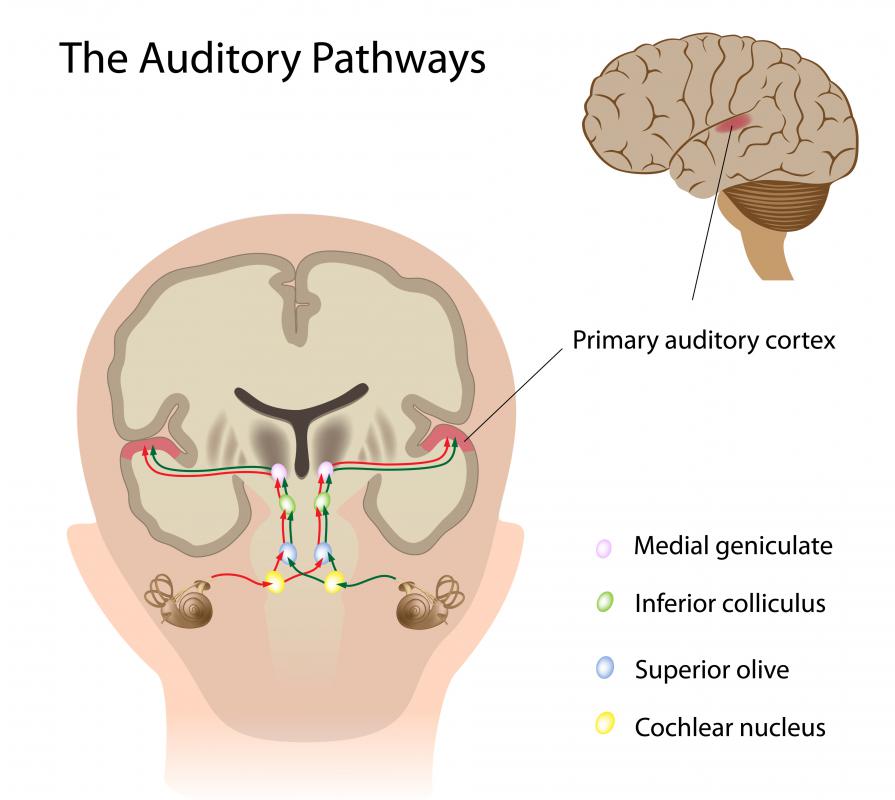At WiseGEEK, we're committed to delivering accurate, trustworthy information. Our expert-authored content is rigorously fact-checked and sourced from credible authorities. Discover how we uphold the highest standards in providing you with reliable knowledge.
What is Auditory Processing?
Auditory processing is a term used to describe what the brain is doing to analyze sound, or what it perceives as sound, and translate it into meaningful language. The ability to understand and produce meaningful speech sounds is a uniquely human one. Sound enters the human ear as a wave of energy and is changed into electrical information that can be used by the brain. Scientists are still investigating how this system works and what kinds of things cause the processes to break down.
The central auditory nervous system is a complicated system. Research has established that the majority of language processing in most people is accomplished in the left hemisphere of the brain. An intricate network of neural circuits deep inside the brain works to distinguish noise from language. This system is highly adaptable to changes caused by injury or environment. The brain is actually able to establish new connections and networks to work around damaged areas.

Problems with auditory processing are not the same thing as hearing disorders. A person with a hearing disorder is not able to receive sound waves correctly. Conversely, the brain does not interpret sound waves correctly in a person with an auditory disorder. For example, a young child with the disorder might not be able to hear the difference between the sounds in the words "bat" and "that."

There are numerous terms used to describe this problem. It can be called central auditory processing disorder (CAPD), or simply auditory processing disorder. Other ways that it is described are auditory perception problems, word deafness, and auditory comprehension deficit.
Auditory processing disorders can be difficult to diagnose. A child with an auditory processing problem sometimes simply appears confused. This is the child who will pick up the cat when they have been asked to find their cap. It is often called a hidden disability because its effects can be easily confused with the effects of other issues, such as attention problems, hearing problems, and obstinacy. Diagnosing an auditory processing disorder usually requires the services of an experienced audiologist that can evaluate hearing function, as well as a speech therapist that can evaluate language ability.
Several strategies are available for helping children and adults with auditory processing disorders. In classroom situations, some students find it helpful to use hearing aids that are wirelessly connected to a microphone that the teacher wears. This cuts down on confusing background noises. There are also specialized phonetic training programs designed to help people learn to distinguish speech sounds. This process is referred to as auditory training.
AS FEATURED ON:
AS FEATURED ON:












Discuss this Article
Post your comments